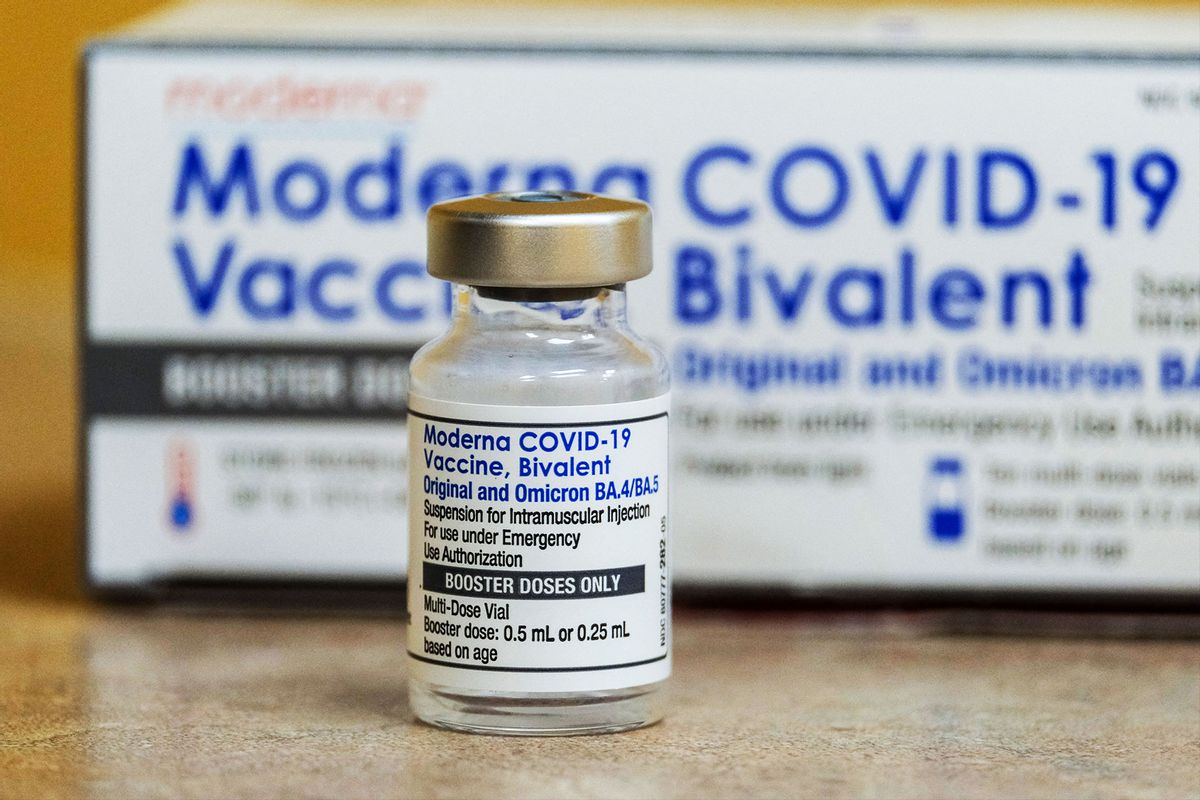As far as pandemic public health measures go, the 2022-2023 holiday season hasn't been much of an improvement on 2021. Cases are surging across most of the US, and the triple threat of COVID-19, RSV, and the flu threatens to overwhelm parts of the health care system. In response, the CDC and President Biden are urging Americans to get the new bivalent booster shot, which provides better protection than the original against newer strains of COVID-19 like the BA.5 omicron subvariant.
But all this advice seems to be falling on deaf ears. As of January 6th, only about 18% of American adults had received the bivalent booster — a dismal rate compared to the 79% who are fully vaccinated and eligible. With cases rising just when most people traveled to see their loved ones, why is uptake of the booster so low and how can we improve it?
As a behavioral researcher, I focus on understanding how people make decisions about their health. And it turns out the booster uptake problem isn't that much of a mystery from a behavioral science perspective.
A problem of motivation
For the most part, vaccine hesitancy isn't the issue. The majority of people say the bivalent booster is as safe and effective as the original COVID-19 vaccine – if not more – and 70% of those already vaccinated against COVID-19 intend to get a booster in the next year. But there's a big gap between intending to do something and actually getting around to it — and that is where the problem lies.
With this combination of low motivation and a preference to disavow the pandemic, it makes sense that even people who believe boosters are a good idea in the abstract don't want to prioritize going out to get them.
Ultimately, the public is likely not getting the bivalent booster because of a simple lack of motivation. Only a third of Americans perceive COVID-19 as even a moderate risk to their holiday season. And fully 77% agree that it's important to live their lives as normal now, without allowing COVID-19 to interrupt their plans.
Getting boosted also means tacitly acknowledging that the pandemic is far from over, a difficult sell for people exhausted by years of masking and distancing.
With this combination of low motivation and a preference to disavow the pandemic, it makes sense that even people who believe boosters are a good idea in the abstract don't want to prioritize going out to get them. But this doesn't mean that efforts to increase the bivalent booster shot's uptake are doomed — there are some easy ways to improve adherence to guidelines in the short term.
The behavioral science of booster shots
This kind of situation — in which people view something positively while not feeling highly motivated to pursue it — is one commonly studied by researchers of health behavior. Health professionals and communities working to get more shots in arms can draw on their work and insights from behavioral science. Two overarching strategies to improve booster uptake could provide big gains:
1. Make the booster shot easier to get. Many different studies have shown that the best way to get someone vaccinated is to have a doctor offer them the vaccine. When simply offered a shot, conveniently and easily, most people who aren't staunchly anti-vaccination will tend to take it. Instead of directing resources toward persuading people to get vaccinated, public health officials should instead focus on making it as easy as possible to actually access the vaccine.
For maximum coverage, mobile, accessible vaccine clinics that take the shot directly to the public would be an ideal option. If that isn't feasible, taking advantage of systems like electronic health records to send pre-emptive appointment invitations is another good option. When all else fails, making liberal use of services that help people locate vaccination clinics near them is still likely to help.
2. Emphasize perceived risks from COVID-19. This strategy's a little more controversial, but fear lies at the heart of decisions about vaccination. Making people feel at risk from COVID-19 would certainly provide greater motivation to seek out the bivalent booster. And there is a strong argument to be made that the low levels of concern that people report about COVID-19 are genuinely underinformed.
A recent study looking at over 735,000 people found that 45% of COVID-19 survivors still struggled with at least one symptom four months post-infection. What's more, repeat cases of COVID-19 may well further increase the risk of serious complications. If more people were truly aware of the chance a COVID-19 infection might disable them for life, the need to protect themselves and their loved ones might become urgent to move the booster shot to the top of their priority list.
Want more health and science stories in your inbox? Subscribe to Salon's weekly newsletter The Vulgar Scientist.
Risk is best communicated not with statistics, but with stories. Sharing the experiences of people who were young and healthy before struggling with long COVID can be a good way to shake people out of their complacency. Including vivid personal details and emotional language makes these kinds of stories especially effective.
Boosting uptake rates
Of course, not everyone feels the same way about COVID-19 vaccination. These two strategies are unlikely to work on committed anti-vaccination skeptics. But by both increasing motivation and improving access, public health officials can more effectively reach out to the passive pro-vaccine majority that's most receptive to their messages.



Shares